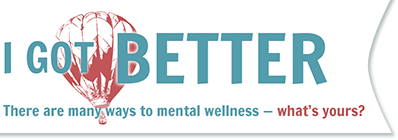The Hope in Mental Health Care Survey
Click here to download the final summary of data collected during the Hope In Mental Health Care Survey.
From June to October, 2012, MindFreedom conducted a two-part Hope in Mental Health Care Survey, which was designed to answer these questions about hope and hopelessness in mental health care:
1. How prevalent are messages of hopelessness in mental health care?
2. What are the sources and contents of these messages?
3. What is the veracity of these messages? In other words, do hopeless prognoses and statements about recovery, medication use, etc. generally prove true or false?
Well over 1000 individuals participated in the survey, contributing their experience, wisdom, and opinions to a growing body of knowledge about recovery from mental and emotional distress.
Four main findings emerged:
1. The mental health system often sends the unhelpful (and hopeless) message to individuals with psychiatric diagnoses that recovery from mental/emotional distress is impossible.
- Nearly two-thirds of respondents with psychiatric diagnoses have received the unhelpful and hopeless message (most frequently from their mental health provider) that recovery from mental/emotional distress is unlikely or impossible.
2. Many people achieve a medication-free, stable wellness even after experiencing extreme mental/emotional distress.
- Nearly 70 percent of people who experienced extreme mental/emotional distress (receiving diagnoses of psychosis or schizophrenia) rated themselves as "recovered" or "fully recovered."
- Over half of individuals who have received diagnoses of psychosis or schizophrenia are currently medication free. Nearly half of the latter group have been medication free for more than five years.
3. Respondents overwhelmingly judged a variety of non-drug alternatives to be more helpful to individuals in mental/emotional distress than standard psychiatric care.
4. Certain psychiatric practices, particularly forced drugging, are often described as “traumatizing.”
To learn more, download the final survey report here.
You can also download a packet of four 1 page (front/back) fact sheets derived from the survey data here.

